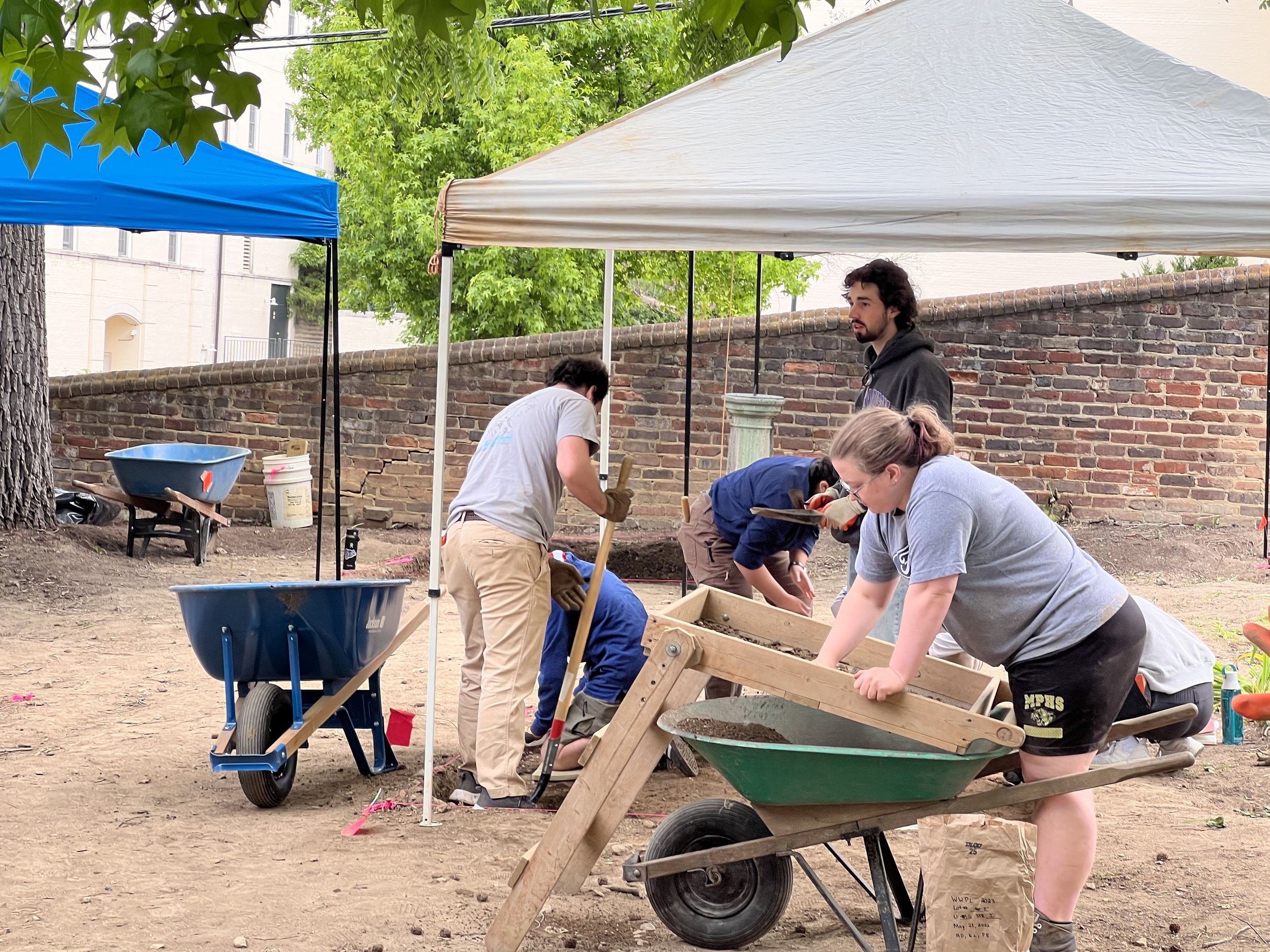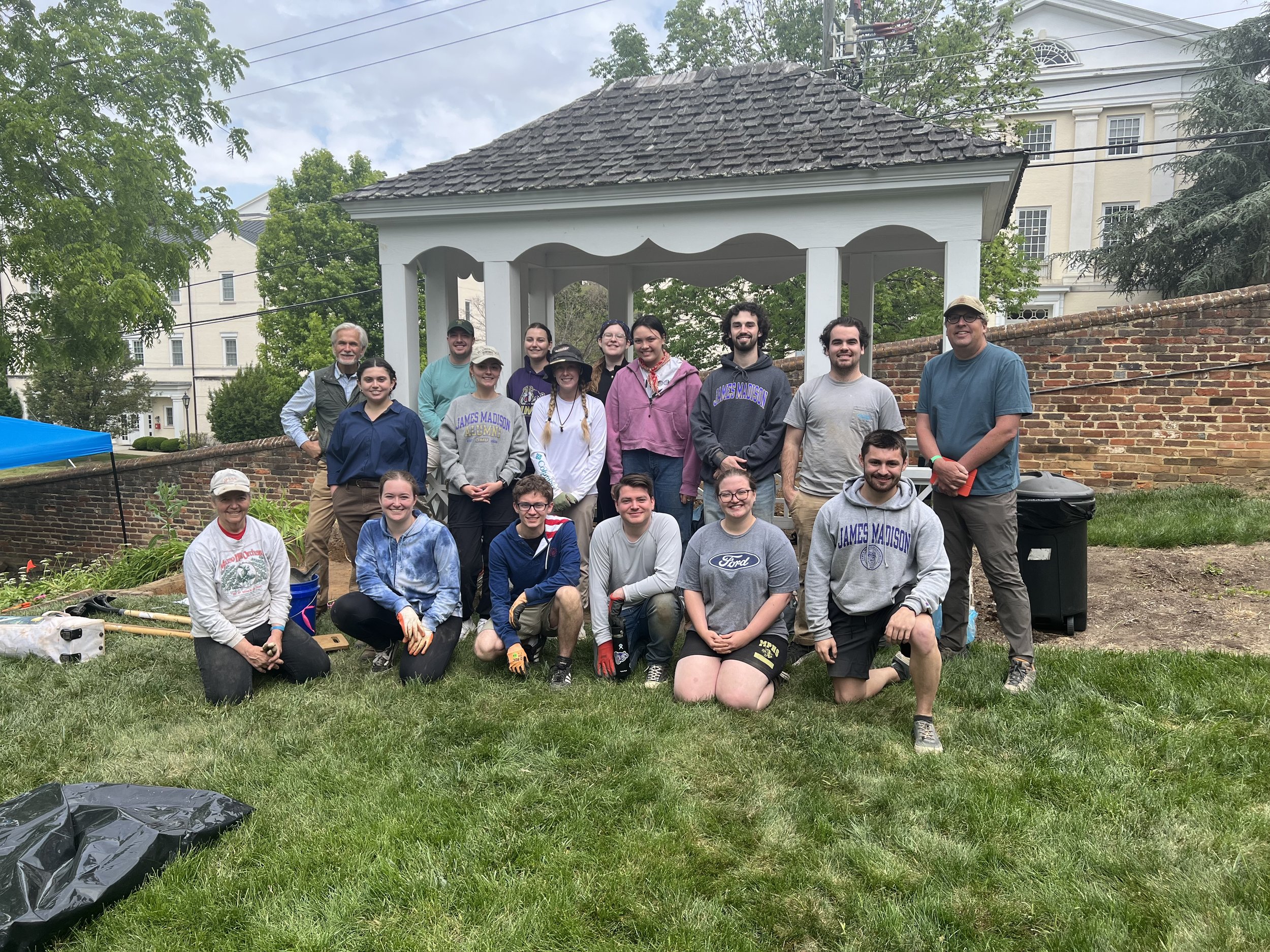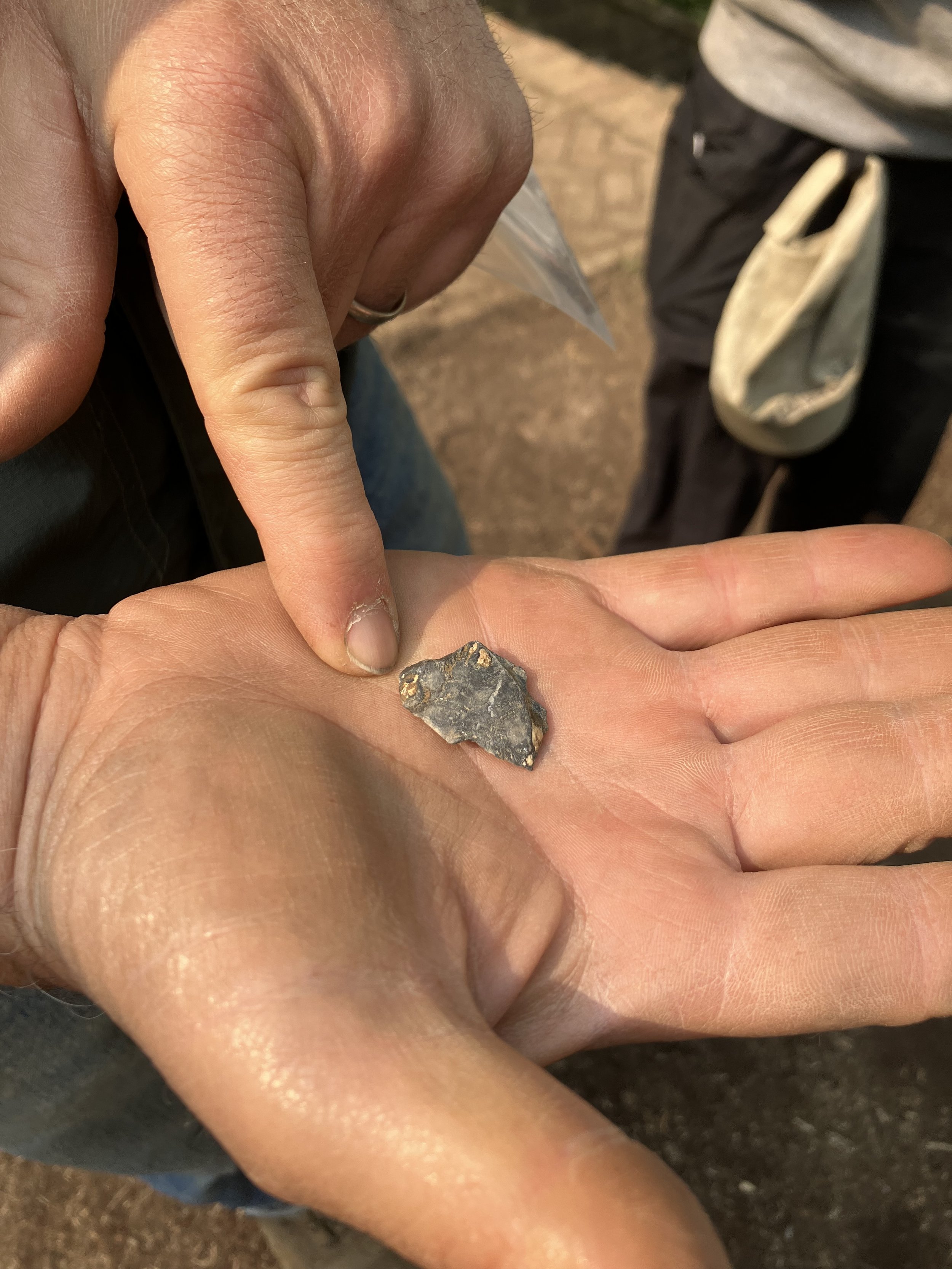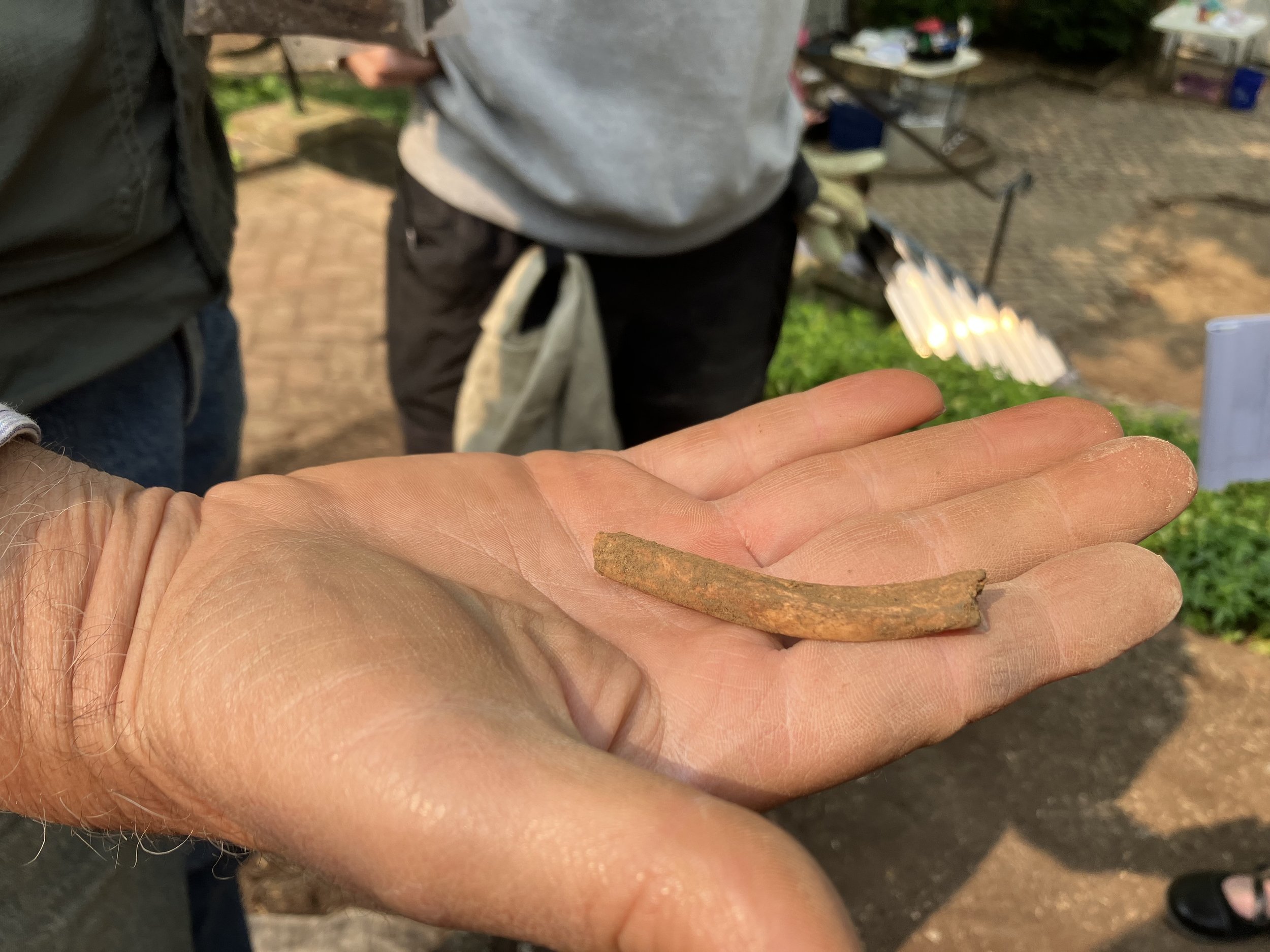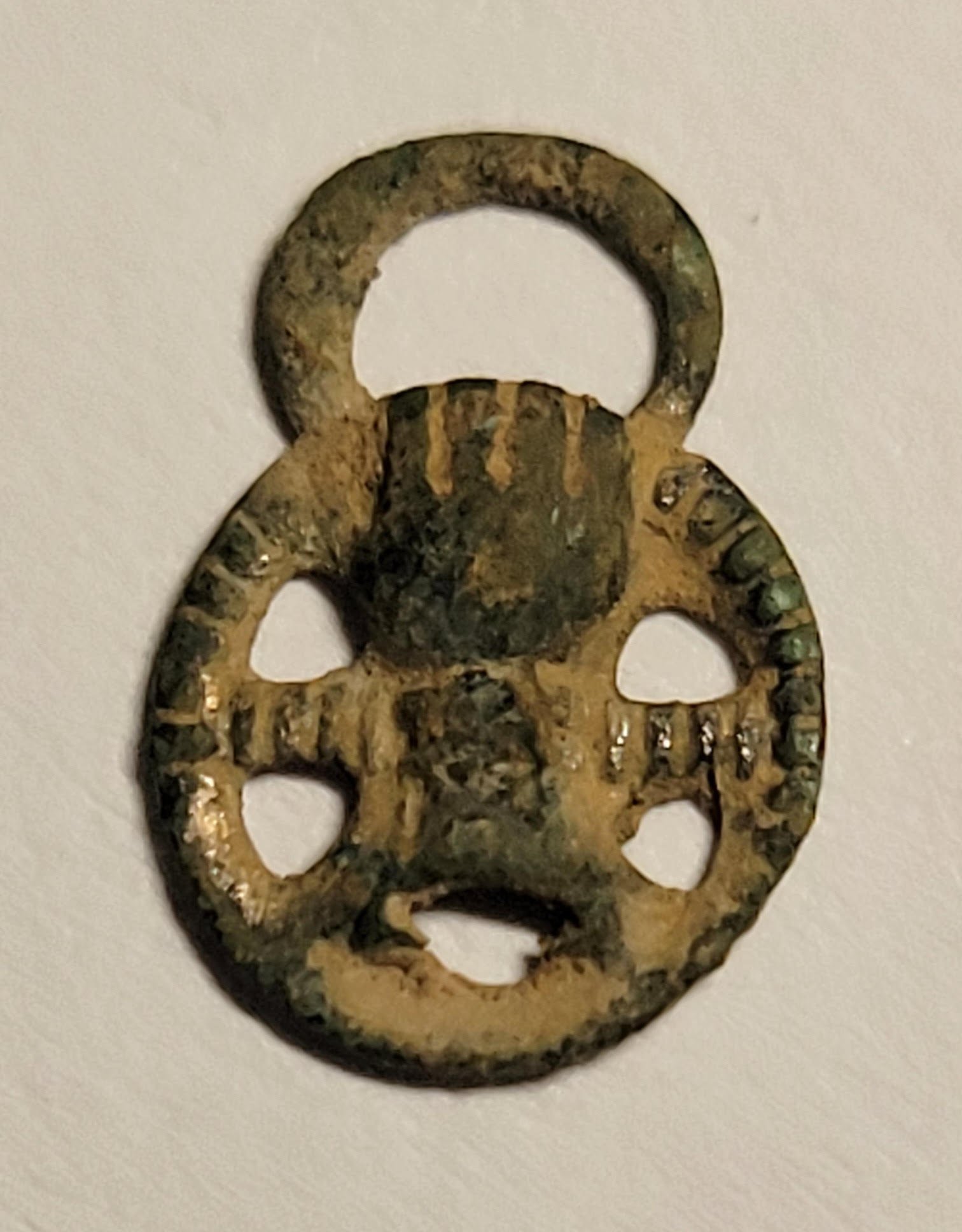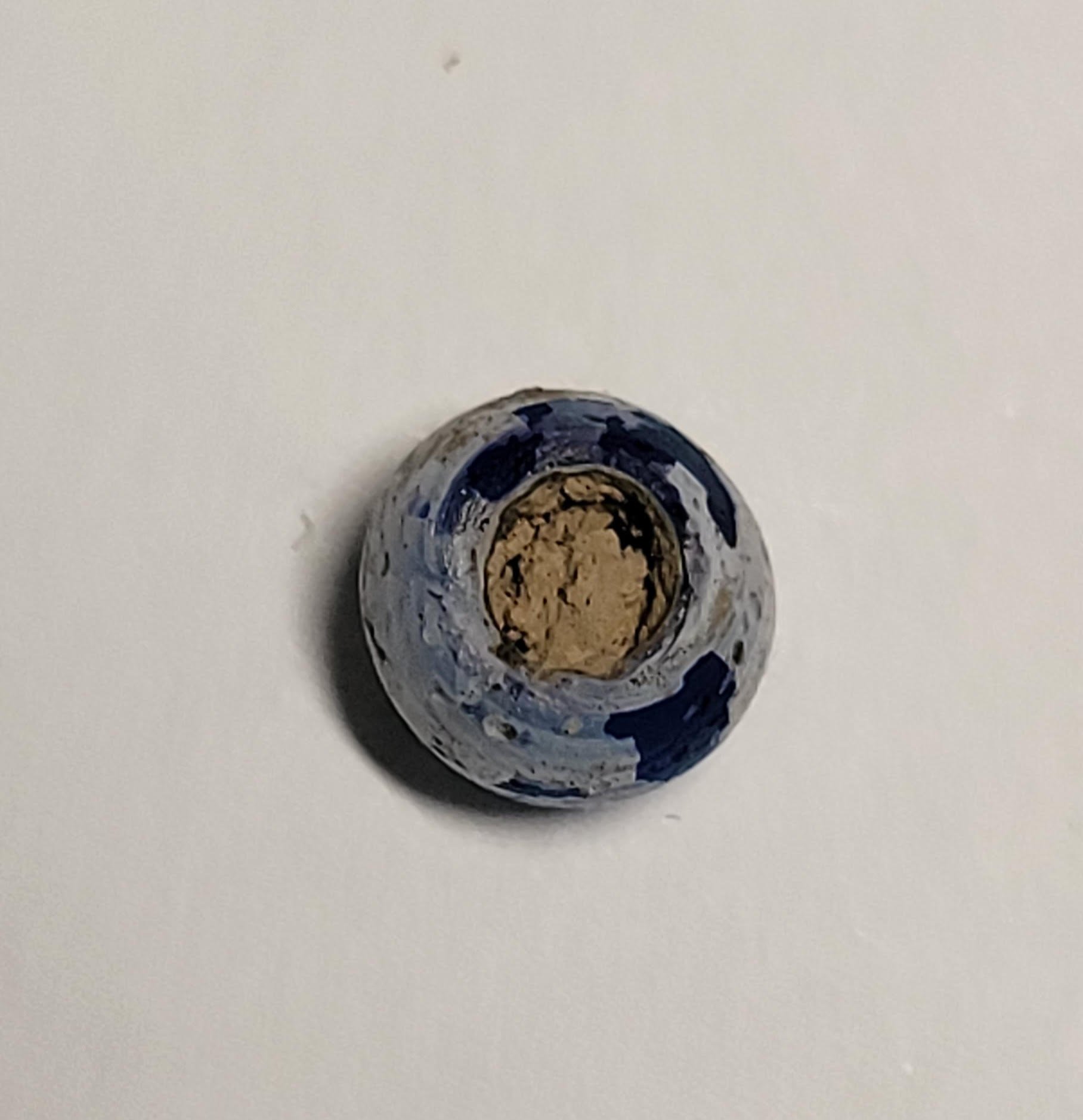The Historic Gardens
The garden is located behind the Manse and is open to the public from dawn until dusk.
Visitors do not need an admission ticket to tour the gardens.
Framed by the Manse – the birthplace of Woodrow Wilson – our gardens are a hidden gem just waiting to welcome you.
ARCHAEOLOGY UPDATE
Jun 19, 2023
End of Week 4: The students have finished excavating for the field school.
Highlights of what was found last week include:
Sewing implements, including straight pins, small thimbles, and buttons, were all found close to one another in the lower terrace area.
New household items, including doll pieces, pipe stem fragments, and a bone-handled toothbrush piece, were all located in the same “Shovel Test Pit” established near the gazebo.
Lower Terrace: The team has established that they have not found anything that explicitly defines an enslaved dwelling, but the items from earlier this summer point to the potential of a dwelling or occupancy.
New Areas: The team opened a small plot near the side of the manse as they continued to research the stratigraphy of the garden and piece together what the original landscape would have looked like.
“Not finding things is as important as finding things.”
We are in the final week of field school, so this week focuses on recording and preparing artifacts for the lab. All found artifacts will be taken to the JMU archaeology lab to be processed this summer and fall. Once processed, they will be returned to the WWPL, along with a full report on the team’s findings.
June 9, 2023
End of Week 3:
The upper terrace has established four new shovel test sites as they continue to discover the privy instead of just midden holes. Some discoveries that are evidence of the community surrounding the upper middle class in the manse include buttons, ceramics and even the food remnants. These items could have been purchased for the house or could be what archaeologists call “The Heirloom Effect,” a phrase used to describe items that have been passed down.
The lower terrace has been expanded upon, and the deeper soil shows evidence of enslaved dwellings, including discoveries of artifacts such as glass beads and other jewelry and evidence of meals based on the bones of the pig, wild game and fish, and even eggshells. The lower terrace has also rendered discoveries older than the city of Staunton, including projectile points from the early archaic period, and range from 4,000 to 8,000 years old.
Dr. Dennis Blanton surveyed the items and proclaimed, Dr. Dennis Blanton surveyed the items and stated, “What we are finding here has never been found in Shenandoah, nor possibly even anywhere west of the Blue Ridge,” in Virginia. The rarity of these items means the dig next week will continue to search for artifacts that will help us further the story of the enslaved who lived in the area.
Click the image above for some quick videos of the field school’s progress!
April 19, 2023
Have you seen our garden lately? Brick sidewalks and several foundation plants have been removed, and the mulch and pine bark are missing. This is because we are preparing for an archaeological field school!
Starting in May, James Madison University students will excavate portions of the garden to uncover its hidden history. Who knows what treasures might be waiting beneath the surface? Stay tuned for updates as the excavation progresses!
ARCHAEOLOGY IN THE GARDENS
Since 2018, our ongoing archaeological investigation has gone beneath the garden to explore more of our hidden history.
While we are in the early stages of archaeology, we know that we have a site rich with intact deposits of artifacts. As the project progresses, we are committed to incorporating what we learn into every aspect of our site interpretation. This research will guide us as we learn more about the people, including the enslaved individuals who lived and worked in the house.
Historical research indicates a stable and privy was located near the gazebo beside Frederick Street. Primary sources also mention a smokehouse on the property, but its location is yet to be discovered. The diary of the first minister details various plants grown on site, including numerous fruit trees, and vegetable and flower gardens.
BOXWOOD BLIGHT STRIKES THE GARDEN
In 2015, the boxwood blight (Cylindrocladium buxicola) disease destroyed the boxwoods in the lower garden. Later the blight spread to the entire property resulting in hundreds of boxwood being removed from the site. Plans for a new garden design will be finalized after the archaeological research is complete.
Boxwood blight was first identified in Virginia in 2011, and by 2013, several properties around the Commonwealth were infected with the fungus. Symptoms of the disease include brown leaf spots that lead to defoliation and black streaking on boxwood stem tissue. For more information on Boxwood Blight, please contact your local extension agent.
Removal of the boxwoods
Boxwood blight
Boxwood garden before the blight
Gardens circa 2019
HISTORY OF THE GARDENS
The original property of the Manse was much larger than the current lot. The lot was a working farm for the minister and his family. In the diary of the first minister, we learn of the various plants that were planted, including fruit trees and vegetable and flower gardens. A stable and a smokehouse were also located on the property. The gardens and grounds were planted by enslaved laborers owned by the first minister.
The garden restoration project was completed in 1933. Designed by Richmond landscape architect Charles F. Gillette, the garden’s primary feature was a bowknot garden. This garden style would not have been part of the house but was a popular feature during the colonial revival period when it was created in 1933. To further highlight the features of the gardens, a brick terrace and pathways, designed by landscape architect Ralph E. Griswold, were erected in 1967-68. In 2008, the Garden Club of Virginia brought new life back to the garden by rebuilding perimeter fencing and planting new boxwoods, lilacs, hostas, and perennials.





